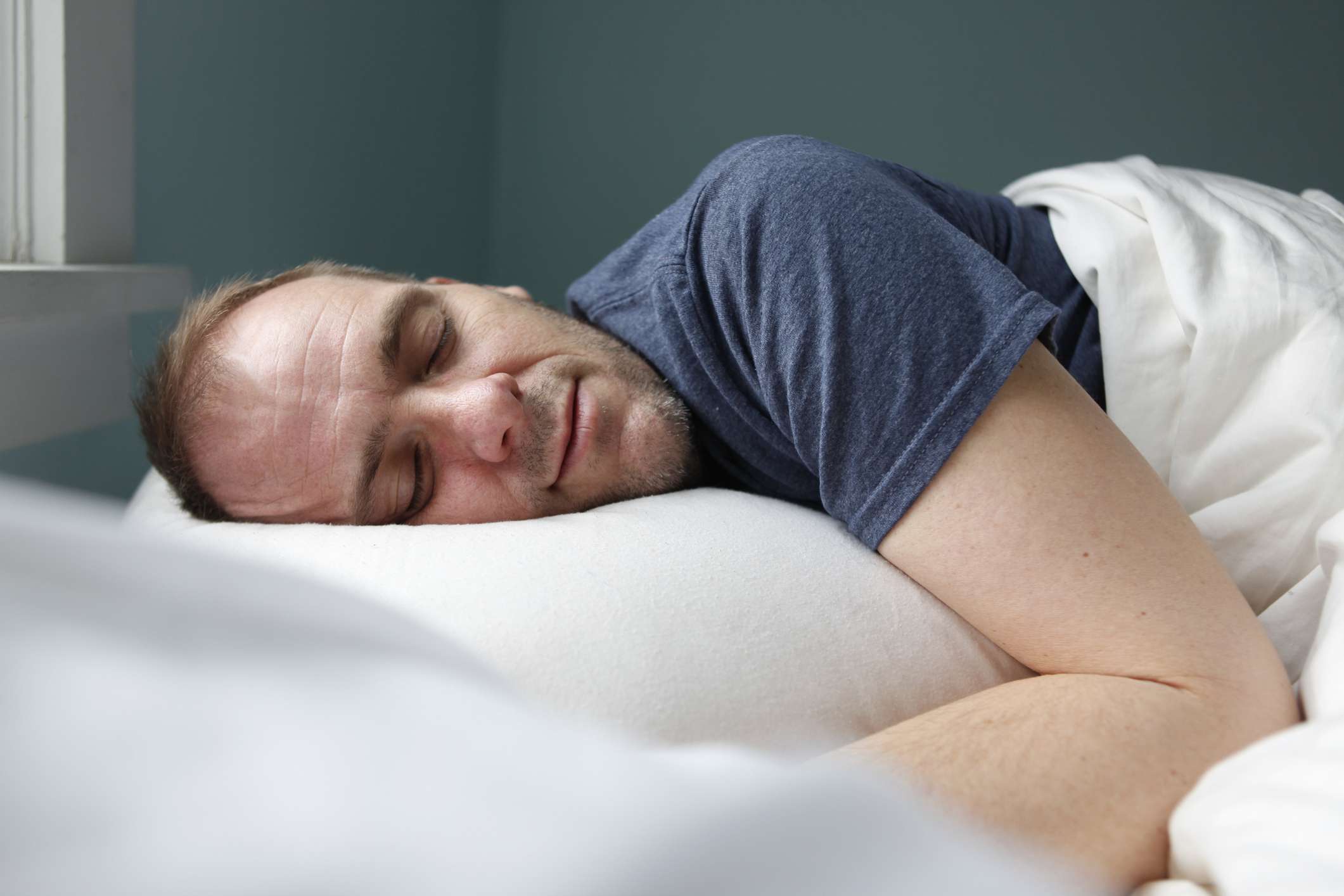Cardiovascular
Do You Snore? Your Heart Health Might Be at Risk
People with obstructive sleep apnea have an increased risk of cardiovascular disease, a new study finds.
The new study, published in the American Journal of Respiratory and Critical Care Medicine, connected the increased risk to decreased blood oxygen levels caused by interrupted breathing that often occurs due to sleep apnea.
An example of this interrupted breathing is snoring, which is one of the most common symptoms of obstructive sleep apnea.
Researchers analyzed data from more than 4,500 middle-aged and older adults to find what aspects of obstructive sleep apnea could be the reason for greater cardiovascular risks. These adults participated in the Osteoporotic Fractures in Men Study (MrOS) and the Multi-Ethnic Study of Atherosclerosis (MESA).
Specifically, the research team looked at hypoxic burden (a decrease in blood oxygen levels) ventilatory burden (interrupted breathing from airway blockage), and nighttime arousals (when an individual wakes up as a result of interrupted breathing, resulting in elevated heart and blood pressure).
In MESA, hypoxic burden was associated with a 45% greater cardiovascular risk. In MrOS, the increased risk was 13%.Ventilatory burden accounted for 38% of increased risks in MESA and 12% in MrOS.
In MESA, nighttime arousals weren’t linked with cardiovascular events; these interruptions were associated with cardiovascular-related deaths in MrOS.
Getty Images / tim scott
The level of sleep apnea someone experiences often coincides with their level of cardiovascular risk.
“The paper revealed that patients with more hypoxic burdens (lower oxygen levels and ventilation) related to their sleep apnea have greater cardiovascular risk,” said Henry Yaggi, MD, MPH, BA, director of the Yale Centers for Sleep Medicine at Yale School of Medicine.
Disruptions to sleep aren’t just annoying—the more intense they are, the more they are likely to heart health.
“Patients who have an elevated heart rate response to sleep apnea also are at higher [cardiovascular] risk, and they have a significant risk reduction in cardiovascular events associated with CPAP,” Yaggi said. “More severe sleep apnea during REM sleep also appears to heighten cardiovascular risk.”
In general, mild obstructive sleep apnea has not been shown to be associated with the same risk of cardiovascular disease as moderate or severe obstructive sleep apnea in most large-scale studies, Sudha Tallavajhula, MD, sleep medicine specialist with UTHealth Houston and TIRR Memorial Hermann, told Health.
Additionally, “mild obstructive sleep apnea may put individuals at increased risk for elevated blood pressure,” Tallavajhula said. “There is certainly an increased risk for cardiovascular disease with more severe degrees of obstructive sleep apnea.”
Positive airway pressure (PAP) is one of the main treatments for sleep apnea.
According to Yaggi, “This therapy is a small device that generates airflow delivered to an interface where patients sleep at night.”
He explained that this treatment opens the upper airway during sleep, preventing it from closing off using a stent.
“This helps to stabilize breathing during sleep, improves sleep quality, and can eliminate the oxygen desaturations related to sleep apnea,” he said.
It’s important to note that sleep apnea is only one sleep disorder that can be harmful to heart health.
“Insomnia (difficulty initiating or maintaining sleep), short sleep duration, and periodic limb movements during sleep have also been demonstrated increased cardiovascular risk,” said Yaggi.
He pointed out that the recommended sleep duration for adults is at least 7 hours, and people should avoid getting less than that
Rigved Tadwalkar, MD, a board-certified cardiologist at Providence Saint John’s Health Center in Santa Monica, CA agreed that chronic insomnia affects cardiovascular risk. The sleep disorder is often associated with higher rates of hypertension and heart disease.
“Sleep-disordered breathing, a term used to more broadly describe a variety of abnormal sleep-related conditions, is also similarly linked to cardiovascular disease,” Tadwalkar said.
Other examples of conditions with sleep-disordered breathing include hypoventilation syndromes and central sleep apnea (CSA).
CSA differs from obstructive sleep apnea (OSA) in that the individual stops breathing or breathes very shallowly due to the brain not sending the proper hormonal signal to the muscles that control breathing, as opposed to OSA, wherein the airway becomes mechanically blocked, Tadwalker explained.
According to Yaggi, “Sleep apnea is a readily treatable condition, and several very effective therapies exist, including positive airway pressure therapy (PAP), oral appliance therapy, and upper airway neurostimulation (INSPIRE).”
In addition to improving sleepiness, sleep disruption, and quality of life symptoms, these treatments may help improve cardiovascular risk, especially among patients with more severe sleep apnea who have significant oxygen desaturation and increases in their heart rate in response to sleep apnea breathing events, Yaggi said.
Tallavajhula said that treatments of OSA have been known to decrease the risk of cardiovascular events, like heart attack and stroke. And the early someone starts treating their OSA, the better.
“Diagnosing and treating obstructive sleep apnea early on has the potential to reduce long-term cardiac and neurological disease risk,” he said.
Tallavajhula explained that the gold standard for treating obstructive sleep apnea is the usage of continuous positive airway pressure [CPAP] machines.
“These machines generate pressurized air to maintain airway patency during sleep and therefore minimize reductions in blood oxygen,” he said.
Other interventions like rational weight loss, avoiding sleeping on your back, reducing alcohol intake prior to bedtime, and addressing structural causes like nasal allergies also can help reduce the severity of sleep apnea.
Tadwalker also pointed out the association between weight reduction and improvement in sleep apnea severity.
He also noted a few other small, achievable tips like “sleeping on the side as opposed to the back, as to prevent airway collapse, and avoiding specific medications such as sedatives, as these can relax the muscles of the throat, potentially exacerbating sleep apnea.”

